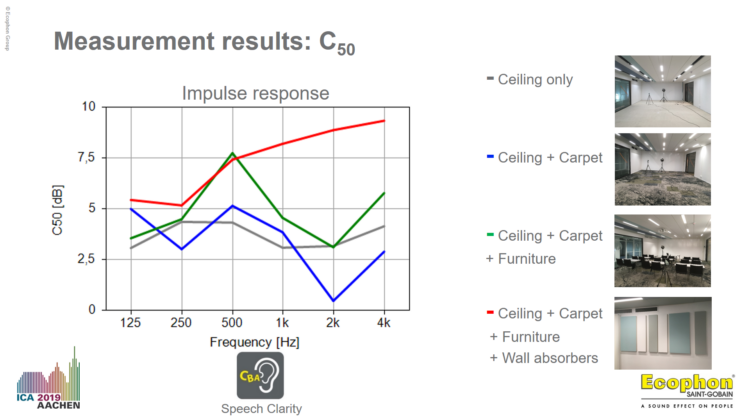
In September, it was a pleasure to present a work in progress “Optimising the acoustic design for a multi-purpose room used for speech communication activities” at ICA 2019 in Aachen. One of our inhouse head office rooms recently remodelled to accommodate a mixture of training functions.
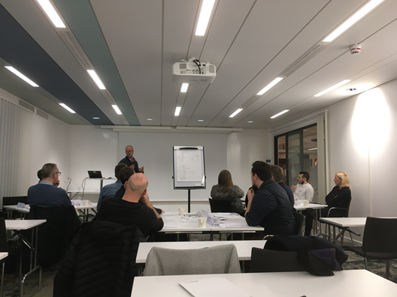
The sound environment for a room designed for speech communication can be influenced by many factors. In the newly completed multi-purpose lecture room, we wanted to see the effects of the different design elements during the process.
This included; utilising predictive modelling, (see a later post for the modelling data here. ) the surface materials in terms of absorption performance, discussion, amount and placement as well as other design details influencing the overall sound environment.
We have followed this project though the build and fit out process making acoustic measurements at different stages. Typically, a room of this type might have acoustic criteria for sound insulation and reverberation time.
However, this can be somewhat limited when we compare the theoretical acoustic predictive modelling versus how the occupants might actually perceive the room in real life situations. So with this in mind we have measured additional room acoustic parameters such as speech clarity and the difference in sound levels. We will identify the acoustic differences as the room is built up with ceiling, wall and floor finishes, in addition to the design elements and furniture.
Four different acoustic configurations…
Below is an outline of the different stages and configurations which we measured the room “Orion”:
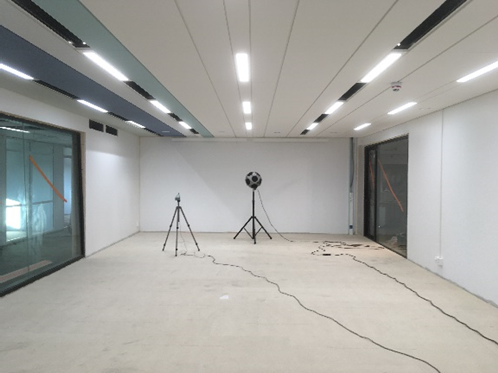
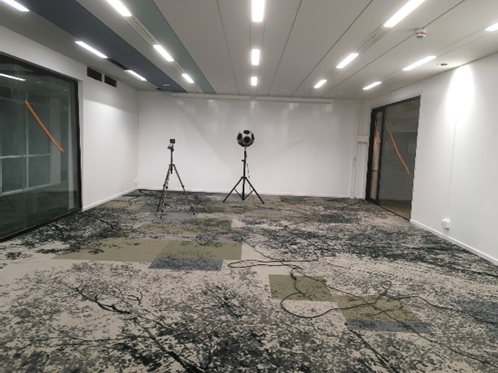
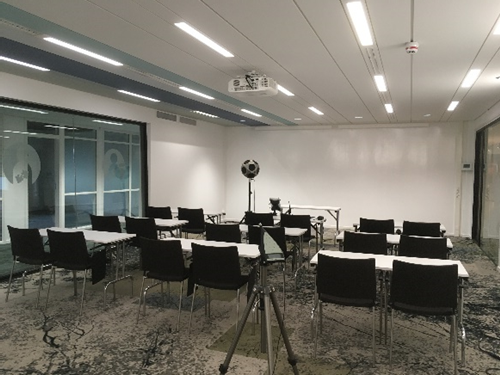
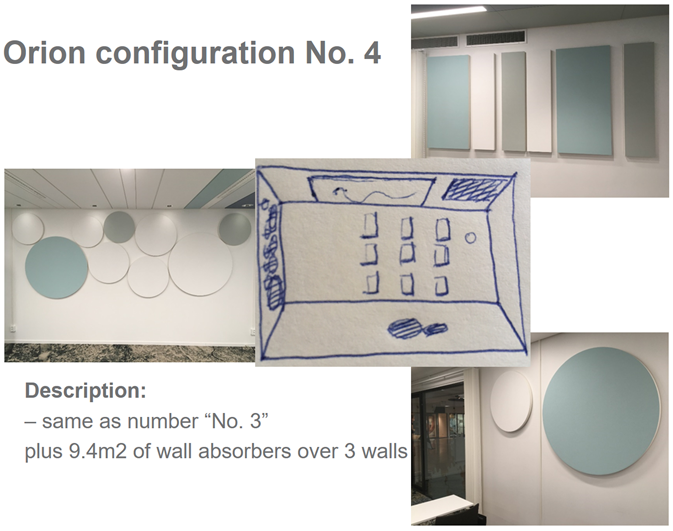
Our measurement results for these four configurations described above are as follows and include Reverberation Time (T20), unoccupied sound levels dB(A) and Speech Clarity (C50):
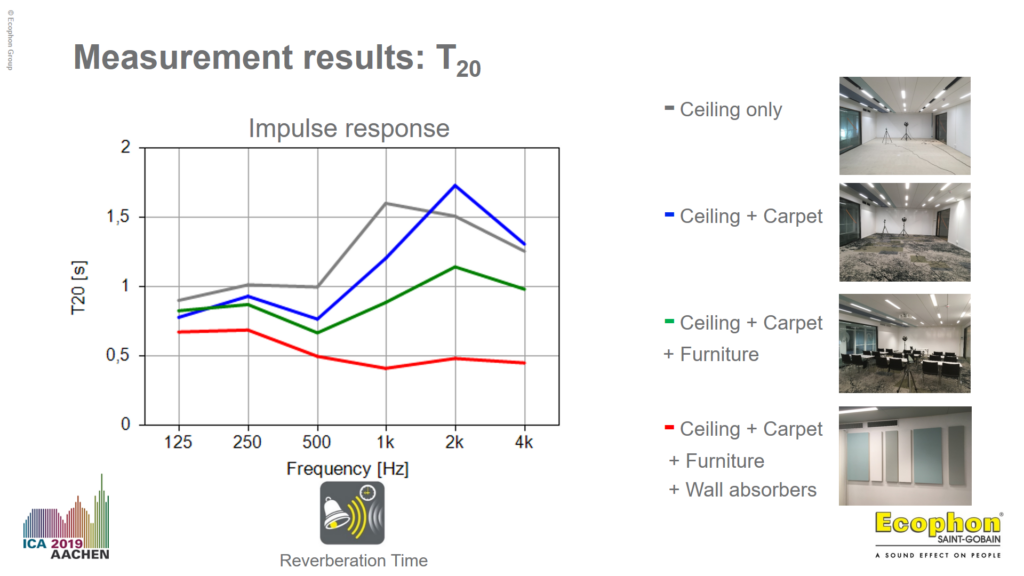
Note the pronounced flutter echo at 1000 & 2000Hz with the ceiling and the “Chinook” flutters at 2000Hz when the carpet was installed.
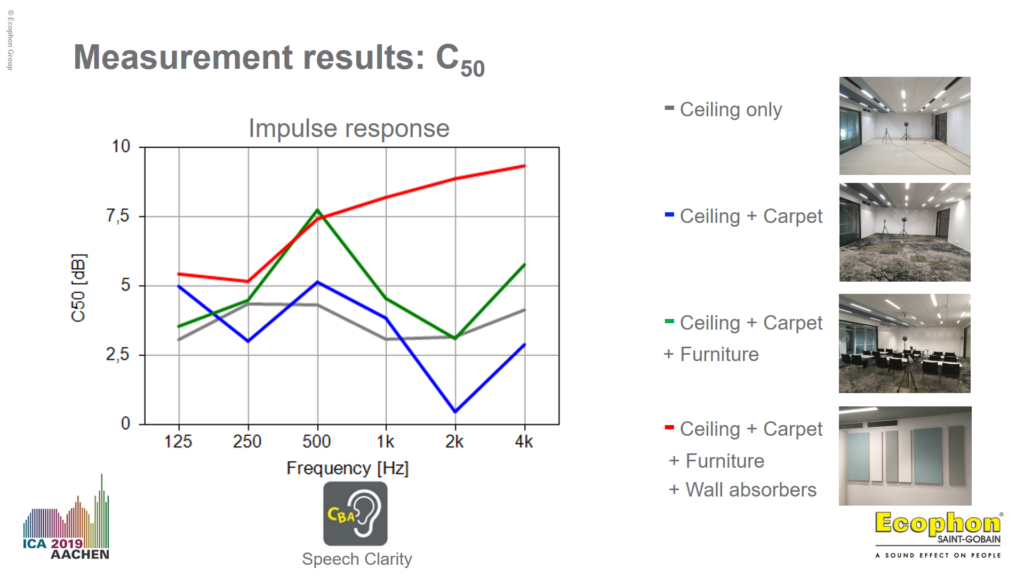
The C50 results also show the “Chinook” flutter echo at 2000Hz when the carpet was installed with the same behaviour even with the furniture in place.
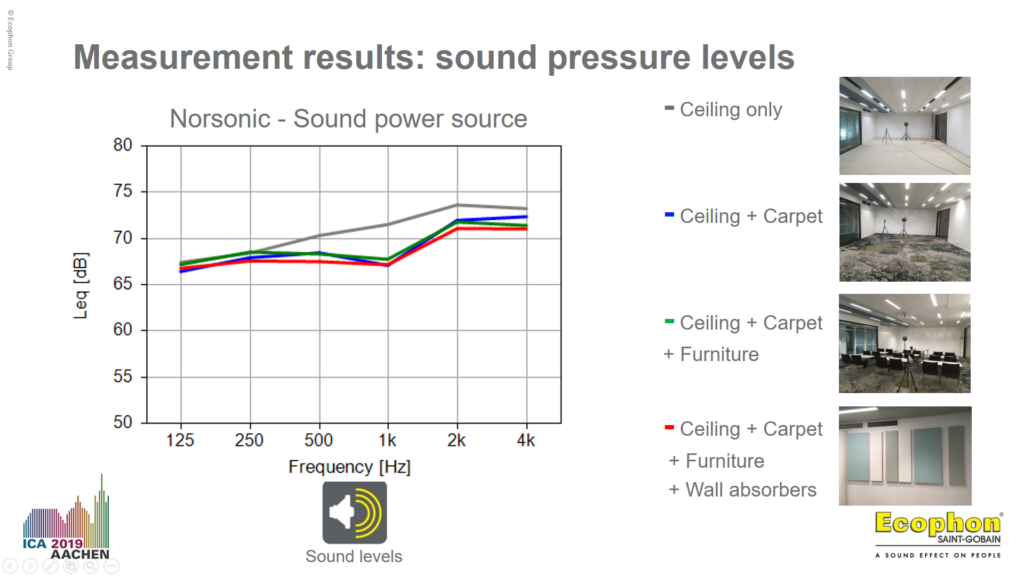
Making the acoustic measurements between the different configuration stages was interesting however to be able to use and experience the room also during this period before completion was a bonus.
Summary findings around this type of non-diffuse environment:
- Ceiling and carpet creates a strong lateral grazing soundfield and pronounced flutter echoes
- At 500Hz we see the scattering effect of the furniture
- At 2000Hz we see the enhanced lateral reflections (flutter echoes) due to the placement of absorption on the carpet and ceiling
- The effect of flutter echo is also apparent with C50
- Flutter echo less pronounced / perceived with a 5 degree tilt in glazing wall – offset outwards redirecting reflections
- Placement of wall absorption has greater effect than tilted glazing
How the room was experienced by the users…
Initially the room seemed quite good, (before the wall absorbers) sitting around the desks felt quite comfortable listening to a presenter or during group work when the room was fully occupied. Mild flutter echoes were apparent everywhere, if the room was partially occupied <25%, even with the 5 degree tilt in the long glass wall. However if you stood to present to the room you experienced the dramatic flutter echo between the parallel vertical reflective surfaces with the absorbent ceiling and carpet installed. This disturbing flutter was completely removed with the addition of the wall absorbers on the side wall beside the speaker and the back wall absorbers were also positively appreciated. We installed a few panels opposite the 5 degree tilted glass and while measurements cannot demonstrate a difference the mild flutter was also completely removed here too.
The fully covering “Class A” absorbing ceiling reduces the rooms sound levels however the really interesting aspect of this case study was the effectiveness of wall absorbers in mitigating flutters particularly with a fully covering carpet, whilst improving the harmony for a variety of speech communication activities.
The conference paper is available to download here. (Please note an error in the paper stating 7.2m2 of wall absorbers is incorrect and should read 9.4m2).
If you have the chance to visit our head office in Sweden you can remove the wall absorbers in a matter of seconds and experience these differences just like our two group rooms which clearly demonstrate the limitations of Reverberation Time in our training area. Read the published article about these group rooms here.
Why Chinook as a reference? It seems a more appropriate descriptive word to describe the flutter intensity instead of the word “strong”: Chinook helicopter.

